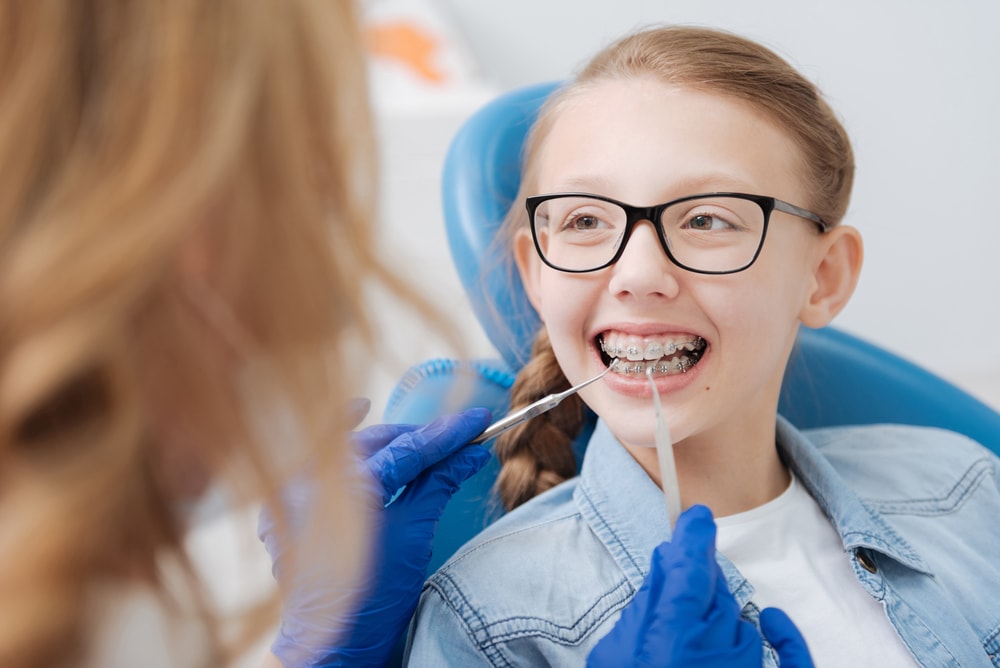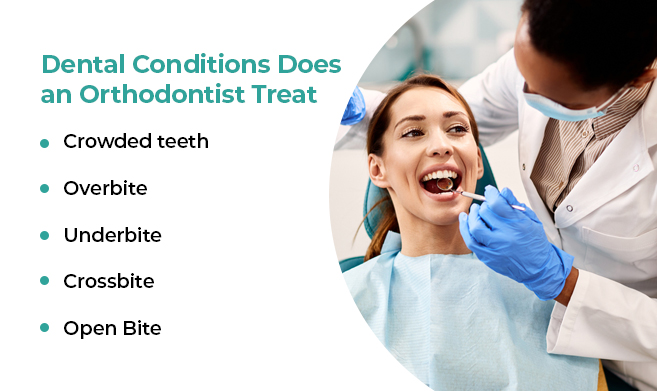Not known Facts About Legacy Orthodontics
Not known Facts About Legacy Orthodontics
Blog Article
The Ultimate Guide To Legacy Orthodontics
Table of ContentsNot known Facts About Legacy OrthodonticsThe Single Strategy To Use For Legacy OrthodonticsThe 10-Minute Rule for Legacy OrthodonticsLegacy Orthodontics Fundamentals ExplainedThe Basic Principles Of Legacy Orthodontics
At Advanced Orthodontics, we give people with a all natural therapy experience. Furthermore, we provide adjustable treatment timetables, adaptable repayment options and a fun, pleasurable experience. leesburg braces. Phone call ( 480) 357-4900 today to learn more and routine a consultation.An orthodontist is a dental expert educated to identify, prevent, and treat teeth and jaw abnormalities. They fix existing conditions and are educated to recognize issues that might establish in the future. Orthodontists work with individuals of all ages, from youngsters to adults. Individuals commonly associate an excellent smile with healthiness.
Malocclusion, or misaligned teeth, can result in dental issues, consisting of tooth decay, periodontal illness, and hard or uncomfortable chewing. Yet not everyone is birthed with straight teeth. If you have a poor bite or huge rooms in between your teeth, you might wish to speak with a dental professional concentrating on orthodontic care.
Legacy Orthodontics Can Be Fun For Everyone
( Image Credit: DigitalVision/Getty Images) Orthodontists use repaired and removable dental devices, like dental braces, retainers, and bands, to change the placement of teeth in your mouth. Orthodontic therapy is for oral irregularities, including: Uneven teethBite problems, like an overbite or an underbiteCrowded teeth or teeth that are too far apartJaw misalignmentThe objective of orthodontic therapy is to enhance your bite.
A healthy and balanced bite ensures you can eat, chew, and speak correctly. While you may think about orthodontists as mostly for youngsters or young adults who require dental braces, they can remedy oral troubles at any kind of age. Orthodontists participate in university, dental institution, and orthodontic institution. After graduation, they invest 2 or 3 years in an orthodontic residency program.
, however not all dental experts are orthodontists. They focus on two locations: Exactly how to properly and securely move teeth Just how to correctly guide growth in the teeth, jaw, and faceOnce an orthodontist has finished training, they have the option to come to be board accredited.
An Unbiased View of Legacy Orthodontics
Imbalance, or malocclusion, is the most usual reason individuals see an orthodontist. It is hereditary and is the result of size distinctions in between the upper and lower jaw or in between the jaw and teeth. Malocclusion brings about tooth overcrowding, an irregular jaw, or irregular bite patterns. Malocclusion is generally treated with: Your orthodontist attaches metal, ceramic, or plastic square bonds to your teeth.
If you have just small malocclusion, you may be able to use clear braces, called aligners, rather than traditional braces (https://www.intensedebate.com/people/legacyortho1). Some individuals need a headgear to assist relocate teeth right into line with pressure from outside the mouth. After braces or aligners, you'll require to put on a retainer. A retainer is a customized tool that maintains your teeth in place.
They can develop added area in the mouth without having to draw teeth. Orthodontists utilize cables, medical screws, or plates to support your jaw bone.
You might require to see an orthodontist if you have: Crowding or not sufficient space for every one of your teethOverbite, when your top teeth come your bottom teethUnderbite, when your bottom teeth are too much forwardSpacing or concerns with gapsCrossbite, which is when your top teeth fit behind your base teeth when your mouth is closedOpen bite or a vertical space between your front base and top teethMisplaced midline, when the facility of your base and upper teeth don't line up Dealing with an oral malocclusion can: Make attacking, eating, and speaking easierImprove the symmetry of our face and your overall appearanceEase pain from temporomandibular joint disordersSeparate your teeth and make them less complicated to cleanse, aiding prevent tooth decay or cavities It's typically a dentist that initially notices misaligned teeth during a regular examination.
The Ultimate Guide To Legacy Orthodontics

During your first orthodontic consultation, you'll likely have: An oral examPhotos taken of your face and smileDental X-raysPanoramic (360 degree) X-rays of your face and headImpressions to develop mold and mildews of your teethThese tests will aid your orthodontist understand how to wage your treatment. leesburg invisalign. An orthodontist is a dental practitioner that's had training to treat your teeth and jaw
Orthodontists may execute surgery, exams,X-rays,and more to help you attain a more comfortable, much healthier smile. An orthodontist is focused on your bite, so something like a damaged tooth would certainly be handled by a dentist. Orthodontists are dental practitioners yet not all dental professionals are orthodontists. Orthodontists are concentrated on your bite, or the method your teeth fit together, and the straightness of your teeth.
Ever questioned exactly how celebrities always appear to have completely aligned teeth? Orthodontists are dental experts visit site who focus on correcting irregularities in the teeth and jaws.
How Legacy Orthodontics can Save You Time, Stress, and Money.

, orthodontists have a varied toolkit at their disposal. These reliable braces use a system of brackets bonded to the teeth and attached by wires.
These removable trays are personalized to considerably move the teeth's position. In instances of narrow jaws, palatal expanders can be made use of to produce room for appropriate tooth alignment.
Report this page